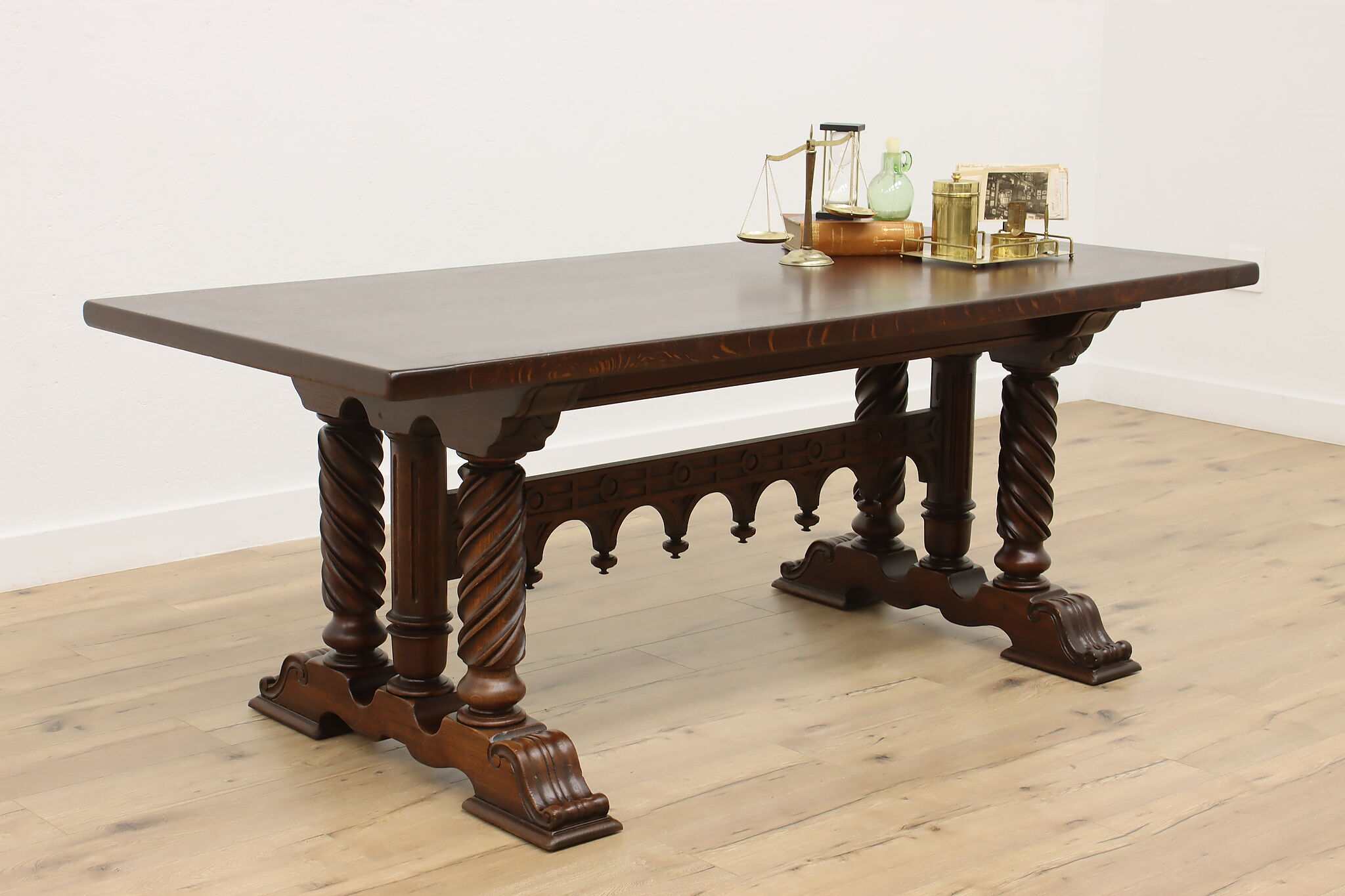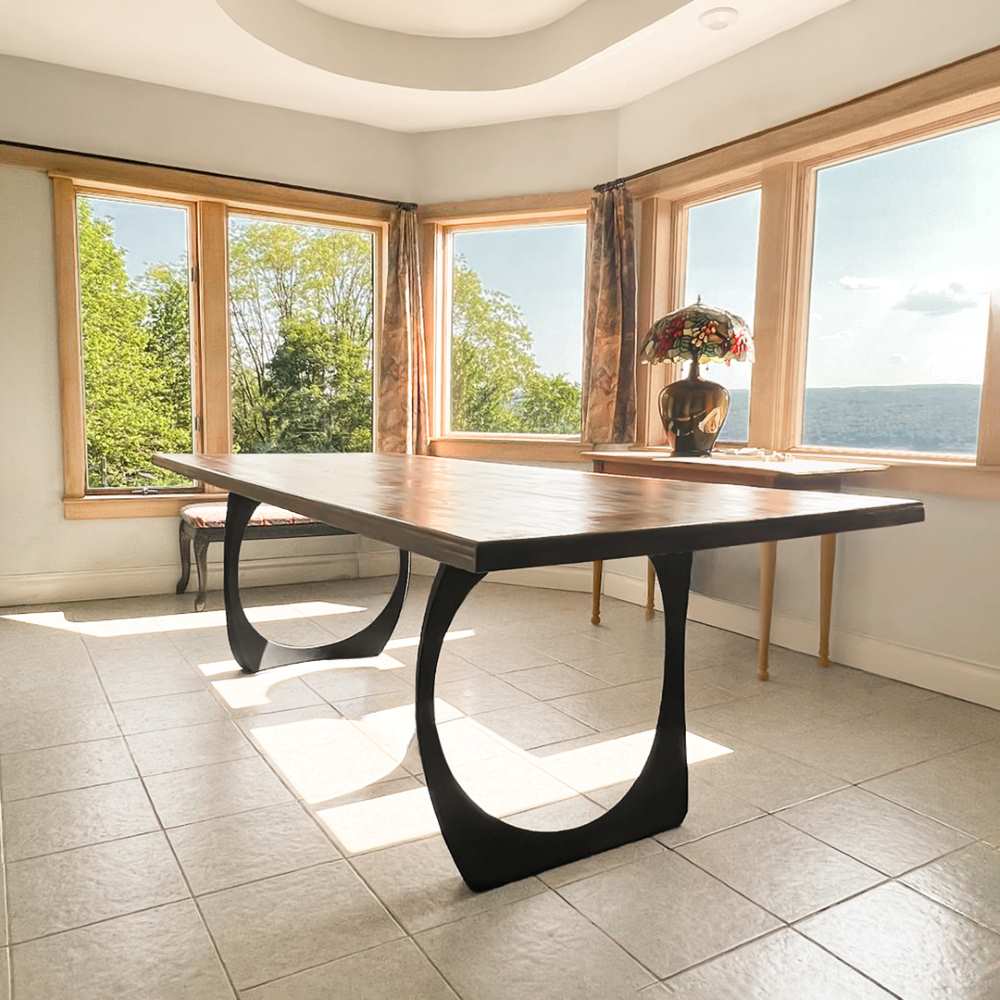From Standard to Modern: Find the Ideal Dining-room Table Legs for Your Design
The selection of eating room table legs plays a critical function in specifying the general character of your room, linking the gap between traditional workmanship and contemporary looks. While traditional designs such as cabriole and transformed legs evoke a feeling of classic refinement, contemporary designs like hairpin and geometric alternatives offer a chance for striking visual passion. Assessing the appropriate balance in between these designs needs a nuanced understanding of your existing decor and individual taste. As you think about these elements, the concern remains: just how can you perfectly incorporate these diverse leg designs to produce an unified dining experience?
Recognizing Table Leg Styles
The range of dining area table leg styles can significantly affect both the looks and capability of the space. Each leg style contributes distinct aesthetic components and sensible attributes, satisfying diverse design preferences and use demands. Comprehending these styles is vital for picking the right table that aligns with your overall indoor layout vision.
As an example, tapered legs supply a tidy, classic look that can enhance a room's sophistication, while stand bases provide stability and optimize legroom, making them excellent for smaller sized areas. Barrette legs, a hallmark of mid-century modern layout, present an industrial panache, enabling a ventilated, open feel. Similarly, trestle legs evoke rustic appeal, providing durable assistance and a sense of timelessness.
Wood legs can bring heat and appearance, whereas metal choices usually communicate a streamlined, contemporary ambiance. Inevitably, comprehending table leg designs is important for producing a natural dining area that reflects personal style while making certain practicality and convenience.
Traditional Table Leg Options
When choosing dining-room table legs, typical alternatives frequently symbolize classic beauty and craftsmanship. These styles mirror an abundant heritage and a commitment to high quality, making them suitable for those who appreciate traditional appearances.
Among the most renowned standard leg designs is the cabriole leg, identified by its elegant curved shape. This style usually includes attractive makings and is most typically discovered in Queen Anne and Chippendale furnishings. One more prominent alternative is the transformed leg, which flaunts a series of smooth, rounded shapes that supply a timeless look while maintaining stability.
Furthermore, the straight leg, while easy, supplies a strong and basic framework that can blend flawlessly with a variety of tabletop designs. For those attracted to ornate outlining, claw-and-ball feet legs stimulate a sense of grandeur and can work as a stunning focal factor in any kind of dining space.
Lastly, stand bases, although not purely legs, supply a different typical alternative that enables sufficient legroom and can be wonderfully carved. Each of these conventional leg designs adds to the total atmosphere of a dining room, marrying feature with visual charm.

Modern Table Leg Designs
Modern table leg layouts provide a diverse series of designs that highlight clean lines and innovative products. These layouts commonly prioritize capability while acting as striking focal points within a dining space. Minimal appearances prevail, with legs crafted from products such as metal, glass, and crafted wood, which add to a airy and modern feeling.
One popular style is the barrette leg, defined by its slender, conical structure that offers security without overwhelming the tabletop (dining room table legs). This design is commonly found in mid-century contemporary furnishings and can easily match numerous dining table shapes. One more fad is making use of geometric shapes, where legs might tackle angular or asymmetrical types, including visual passion and a touch of artistry

Mixing Designs for One-of-a-kind Rooms
Usually, home owners look for to develop one-of-a-kind eating areas that show their individual design by mixing different design elements. This strategy permits the consolidation of varied looks, leading to a harmonious yet distinctive setting. Matching a rustic wood table with sleek, look at this now modern-day metal legs can create a distinctive contrast that elevates the room's overall allure.
Furthermore, incorporating vintage table legs with modern tabletops can stimulate a feeling of history while preserving a modern perceptiveness. Such combinations not only display individual preference but likewise encourage creative thinking, enabling property owners to curate a room that feels both personal and welcoming.
Color plays a crucial function in this mixing process; choosing table legs that enhance or contrast with the existing color design can improve aesthetic get more rate of interest. For instance, whitewashed legs can soften the daring of a dark table surface, producing a well balanced aesthetic.
Tips for Picking the Right Legs
Selecting the right table legs is necessary for attaining both capability and aesthetic charm in your eating space. Begin by thinking about the total style of your area. Standard setups gain from legs that feature complex makings or turned styles, while contemporary rooms might ask for sleek, minimalist designs.
Following, assess the height and security of the legs. dining room table legs. Common table vary between 28 to 30 inches in height, so guarantee the legs enhance this measurement for comfort. Furthermore, durable products, such as wood or steel, can enhance stability and durability
Examine the leg form also-- alternatives include right, tapered, or stand layouts. Straight legs offer a classic look, while conical legs can include a touch of beauty. Pedestal bases supply enough legroom and are ideal for smaller spaces.
Conclusion
In summary, selecting the optimal dining room table legs requires cautious consideration of both typical and modern-day styles. Traditional options such as cabriole and transformed legs supply classic elegance, while modern layouts like barrette and geometric forms offer a contemporary touch. By integrating leg style, elevation, and product with the total decor, a natural and inviting ambience can be accomplished. Ultimately, the chosen table legs should Visit Website show the wanted visual, improving the dining experience within the room.
The range of dining space table leg styles can significantly affect both the looks and functionality of the space. Ultimately, comprehending table leg designs is necessary for creating a natural dining area that mirrors personal design while guaranteeing usefulness and comfort.One of the most legendary standard leg styles is the cabriole leg, defined by its elegant rounded form. Straight legs offer a traditional look, while tapered legs can include a touch of elegance.In recap, picking the suitable dining area table legs requires cautious factor to consider of both contemporary and typical designs.